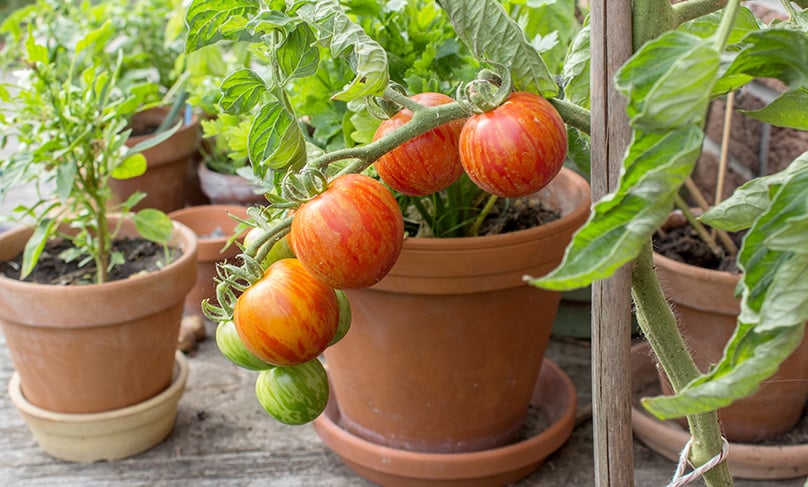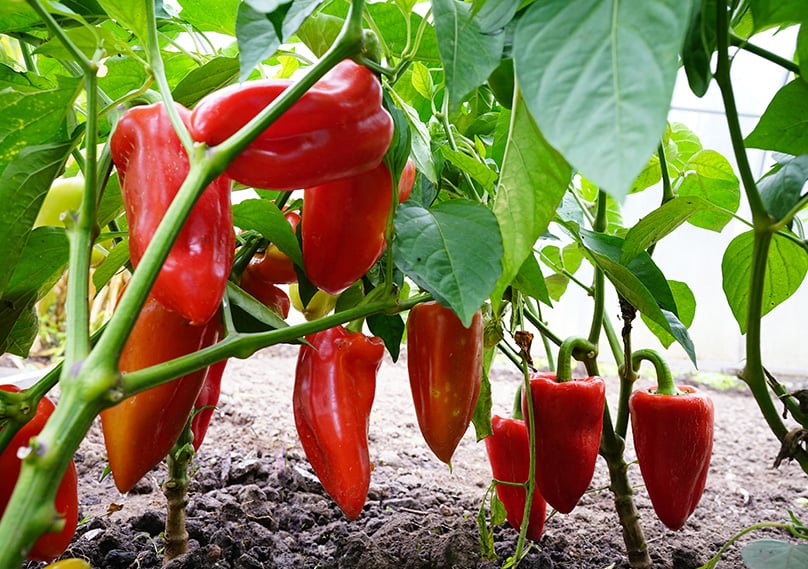Cilantro is one of the most popular and versatile herbs in the kitchen and garden. Not only does it add a delicious flavor to your dishes, but it also has a plethora of health benefits. One of the best ways to enhance the growth of your cilantro is to pair it with compatible plants. In this article, we will explore cilantro companion plants that will improve the overall health and growth of your garden.
Quick Facts
| Category | Companion Plant | Benefit |
|---|---|---|
| Vegetable | Tomatoes | Soil improvement, pest repelling, shade, nutrient provision |
| Vegetable | Peppers | Flavor enhancement, pest repelling, shade, support, nutrient provision |
| Vegetable | Spinach | Flavor enhancement, pest repelling, nutrient provision |
| Vegetable | Onions | Pest repelling, nutrient provision, soil texture improvement |
| Vegetable | Lettuce | Soil density improvement, pest resistance, nutrient provision |
| Herb | Basil | Pest deterrence, flavor enhancement |
| Herb | Dill | Pest deterrence, fungicidal properties |
| Herb | Chives | Pest deterrence, shade, temperature reduction |
| Herb | Parsley | Pest repelling, mutual support |
| Herb | Oregano | Antifungal, antibacterial properties, pest deterrence |
Understanding Companion Planting
Companion planting is an ancient practice that has been used for centuries to promote healthy and thriving gardens. It involves pairing plants together based on their natural compatibility and symbiotic relationships. When done correctly, companion planting can lead to a bountiful harvest and a beautiful garden.
One of the key benefits of companion planting is pest control. Certain plants have natural pest-repelling properties that can protect their companion plants from harmful insects. For example, planting marigolds alongside tomatoes can help to deter aphids and other pests that commonly attack tomato plants.
Another benefit of companion planting is improved soil quality. Some plants have deep root systems that can help to break up compacted soil and improve drainage, while others can add valuable nutrients to the soil through their natural processes. For example, planting legumes like peas or beans alongside corn can help to fix nitrogen in the soil, which is essential for healthy plant growth.
Benefits of Companion Planting
Companion planting has numerous benefits for both the plants and the gardener. By planting a diverse range of plants together, you can create a more resilient and self-sustaining ecosystem in your garden. This can lead to improved soil health, reduced pest problems, and higher yields.
Companion planting can also help to enhance the flavor of certain plants. For example, planting basil alongside tomatoes can help to improve the flavor of both plants, resulting in a more delicious and aromatic harvest.
How to Choose the Right Companion Plants
Choosing the right companion plants is key to successful companion planting. When selecting companion plants for a specific crop, it’s important to consider factors such as soil type, climate, and light requirements. You’ll want to choose plants that thrive under similar conditions to ensure that they can coexist harmoniously.
It’s also important to consider the natural relationships between plants. Some plants are known to have beneficial effects on their neighbors, while others can be harmful. For example, planting onions or garlic alongside beans can help to deter pests, while planting beans alongside members of the nightshade family (like tomatoes or peppers) can lead to stunted growth and reduced yields.
Ultimately, the key to successful companion planting is experimentation and observation. By trying out different plant combinations and observing their effects on each other, you can learn which combinations work best for your specific garden and growing conditions.

Best Vegetable Companions for Cilantro
Cilantro is a versatile herb that is easy to grow and can be used in a variety of dishes. It is also a great companion plant for many vegetables in the garden. Here are some of the best vegetable companions for cilantro:
Tomatoes

Tomatoes are perfect companions for cilantro. They have an intricate system which helps in soil improvement. Cilantro repels tomato pests, including aphids. Also, the tomato canopy provides ideal shade for cilantro.
Tomatoes are also a great source of nutrients for cilantro. They are rich in potassium, which helps cilantro grow strong and healthy. In addition, the acidity of tomatoes can help to balance the pH level of the soil, which is important for the growth of cilantro.
Peppers

Peppers thrive well with cilantro in the same garden bed. Cilantro enhances the flavor of peppers, and its strong scent keeps away aphids. Conversely, peppers provide natural shade and support for cilantro.
Peppers are also a great source of vitamin C, which is important for the growth and health of cilantro. In addition, the capsaicin in peppers can help to repel pests and insects that could harm cilantro.
Spinach

Spinach and cilantro pair up perfectly in the vegetable garden. Spinach provides natural coverage for cilantro, enhancing the flavor and reducing the risk of bolting. In return, cilantro repels aphids and other pests that harm spinach.
Spinach is also a great source of iron, which is important for the growth and health of cilantro. In addition, the nutrients in spinach can help to improve the quality of the soil, which is important for the growth of cilantro.
Onions

Onions and cilantro marry well in the garden. Cilantro deters onion pests while onions repel pests that could harm cilantro. Besides, their combined scent form a confounding aroma that pests can’t stand.
Onions are also a great source of sulfur, which is important for the growth and health of cilantro. In addition, the nutrients in onions can help to improve the texture and fertility of the soil, which is important for the growth of cilantro.
Lettuce

Lettuce and cilantro are great companions in the garden. Lettuce’s shallow roots system adds density to the soil, preventing evaporation and enhancing water-holding capacity. Diluted cilantro tea can benefit lettuce plants by increasing pest resistance.
Lettuce is also a great source of vitamins and minerals, which are important for the growth and health of cilantro. In addition, the nutrients in lettuce can help to improve the structure and fertility of the soil, which is important for the growth of cilantro.
In conclusion, cilantro is a great companion plant for many vegetables in the garden. By planting cilantro with these vegetables, you can improve the health and yield of your garden while enjoying the delicious flavor of cilantro in your meals.
Best Herb Companions for Cilantro
Cilantro, also known as coriander, is a versatile herb used in different cuisines worldwide. It has a unique flavor profile that adds a fresh, citrusy taste to dishes. However, cilantro is also prone to attracting pests and diseases that can affect its growth and yield. To combat these challenges, gardeners have discovered that planting cilantro alongside certain herbs can help protect it and enhance its growth. Here are some of the best herb companions for cilantro:
Basil

Basil and cilantro perform well together in the garden. Basil produces volatile compounds that help deter pests from invading cilantro’s space. Similarly, cilantro’s strong scent helps protect basil from pests and diseases. In addition, basil is a great culinary herb that can be used alongside cilantro to add flavor to dishes such as pesto, salads, and soups.
Dill

Dill is an excellent companion for cilantro. Its strong scent masks cilantro’s, making it difficult for pests to locate the cilantro. Additionally, dill has natural fungicidal properties that benefit cilantro and other plants in its vicinity. Dill is also a versatile herb that can be used in pickling, fish dishes, and salads, among others.
Chives

Chives and cilantro are good plant companions. Chives have a natural deterrence against aphids and other pests that could damage cilantro. Equally, cilantro provides an excellent cover crop for chives, providing shade and reducing soil temperature. Chives are also a great addition to dishes such as omelets, baked potatoes, and soups.
Parsley

Parsley and cilantro are an excellent herb combination for the garden. They both belong to the parsley family and thrive in the same growing conditions. Parsley’s natural scent repels cilantro pests, while their intertwining tendrils provide mutual support. Parsley is also a versatile herb that can be used in sauces, stews, and salads, among others.
Oregano

Cilantro and oregano are great companions that thrive in the same soil conditions. Oregano has antifungal and antibacterial properties that benefit cilantro. Moreover, cilantro’s strong scent helps protect oregano against pests such as spider mites and aphids. Oregano is also a flavorful herb that can be used in pizza, pasta, and meat dishes, among others.
It’s clear that cilantro was meant to be grown alongside other plants. These herb companions not only enhance cilantro’s growth but also provide a range of culinary benefits. By planting these herbs together, you can create a diverse and thriving garden that will yield a bountiful harvest. Experiment with different combinations and enjoy the benefits of fresh, flavorful herbs in your cooking.
Cilantro FAQS
What should not be planted near cilantro?
Cilantro should not be planted near fennel, as the two plants tend to compete for resources and can inhibit each other’s growth. It’s also advised to avoid planting cilantro near nightshade family plants (like potatoes) as they may lead to stunted growth and reduced yields for both plants.
What are the best companion plants for cilantro?
The best companion plants for cilantro include tomatoes, peppers, spinach, onions, lettuce, basil, dill, chives, parsley, and oregano. These plants help improve soil health, deter pests, and enhance the growth and flavor of each other.
Can I plant cilantro with tomatoes?
Yes, cilantro and tomatoes make excellent companion plants. Cilantro helps repel tomato pests like aphids, and the tomato canopy provides ideal shade for cilantro. In addition, tomatoes provide valuable nutrients for cilantro’s growth.
Are cilantro and basil companion plants?
Yes, cilantro and basil are good companion plants. Basil produces volatile compounds that help deter pests from invading cilantro’s space, and cilantro’s strong scent helps protect basil from pests and diseases. Both herbs can also be used together in various dishes to add flavor.
Does cilantro like sun or shade?
Cilantro prefers full sun to partial shade. It can tolerate some shade, especially during hot afternoons. In hot climates, cilantro benefits from some afternoon shade to prevent bolting (prematurely producing seeds) and to maintain its flavor.
Which herbs cannot be planted together?
Some herbs that should not be planted together include cilantro and fennel, dill and lavender, and basil and rue. These combinations can result in competition for resources, stunted growth, or reduced yields. It’s essential to research the specific needs and compatibility of herbs before planting them together in your garden.
